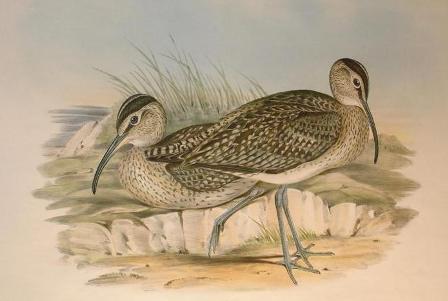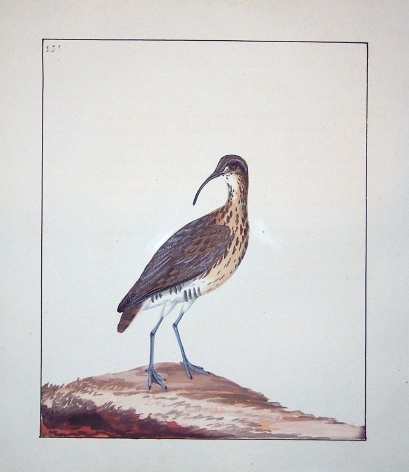
There are three sub-species of Whimbrel, the nominate phaeopus which breeds in far northern Europe and western Siberia, the American whimbrel, hudsonicus, which breeds in north America and regularly reaches New Zealand in small numbers, and variegata, which breeds in eastern Siberia and and is the common form in Australasia.
I used to regularly see these birds at Ohiwa Harbour where a few would overwinter. They were wary birds, roosting on one of the island sandbanks away from the large flock of godwits. Up to about 200 visit New Zealand every year. What a long way for so few birds to come.
Whimbrels feed by deep probing with their long bills which are suited to taking marine worms and crabs.
The nest is a bare scrape on tundra or Arctic moorland. Three to five eggs are laid. Adults are very defensive of nesting area and will attack humans who come too close.
— Narena Olliver, Greytown, 2009

Other common names: —
Asiatic whimbrel, eastern whimbrel
Description: —
Native bird
43 cm., 450 g., dark brown streaky bird, long downward curved bill, white eyebrows, white rump distinguishes it from the Hudsonian.
Where to find: —
Found in small numbers on estuaries thoughout New Zealand.
Youtube: —
Illustration description: —
Gould, John, Birds of Australia, 1840-48.
Lewin, William, Birds of Great Britain, 1789.
Reference(s): —
Heather, B., & Robertson, H., Field Guide to the Birds of New Zealand, 2000.
Page date & version: —
Thursday, 5 June 2014; ver2009v1

